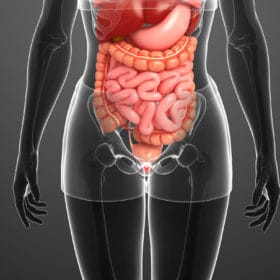In the field of weight training, there is a plethora of terms that seem to have a magical aura about them, filling many an exerciser with a sense of awe and emotion as if by magic. One of these hotly debated terms is the so-called anabolic windows, without which it is supposedly almost impossible to gain muscle mass. In line with the emotional charge of this topic, the anabolic window has often been examined in the context of scientific studies, which, especially in the past, unanimously underpinned its existence and significance. However, new scientific studies have put the previous findings into perspective and now raise the quite justified question of whether there is such a thing as the anabolic window at all. We want to get to the bottom of this question in this article.
In search of the anabolic window
It is an incontrovertible fact that the body must be supplied with a sufficient amount of macronutrients so that the growth stimuli provided during training can be converted into new muscle tissue. It therefore seems logical that the body, which is literally crying out for nutrients after a workout, is also particularly receptive to carbohydrates, fats and proteins in a certain time window after the end of exercise. In principle, this also corresponds to the physiological facts, which have also been confirmed by recent studies by renowned sports scientists. However, the prevailing definition of the anabolic window suggests that the approximately 60-minute period in which the organism massively increases its absorption capacity is very limited, but conversely is all the more important for muscle building. The reasons for this finding include studies on test subjects who had to fast in the course of the investigation in order to be able to document the body's readiness to absorb nutrients without interference. It is therefore obvious that such a procedure falsifies the real values so that they cannot be transferred to the average strength athlete. Regardless of this, there are still many athletes who reach for the Tupperware in a panic immediately after training so as not to miss the anabolic window.
The truth behind the myth
The truth is actually quite simple. In practice, the anabolic window actually exists. This is of course logical, as it makes physiological sense that an organism is particularly receptive to nutrients immediately after a major effort and the associated energy expenditure. From an evolutionary point of view, the premature conclusion of older studies that this window is only open for a short time makes absolutely no sense. Why? Quite simply, let's put ourselves in the shoes of our ancestors in the Palaeolithic Age, who certainly had to exert as much effort hunting mammoths and other wild animals as we do in our strength training. If the body's ability to absorb nutrients had actually been squeezed into such a narrow time window, our ancestors would never have been able to build up really strong muscles, because cutting up, transporting and preparing the prey took hours. Nevertheless, these people were extremely strong, as can be seen from their skeletons. Our trip back to the Stone Age therefore teaches us that the anabolic window does indeed exist, but in reality it is open for much longer than we have been led to believe for a long time.
What does this mean in practice?
In practice, this means that you have several hours after training to take advantage of the anabolic metabolic environment. Recent studies even suggest that this environment lasts up to 24 hours after exercise, in a steadily decreasing form. The sooner you start feeding nutrients, the better it undoubtedly is, but there is no ultimate compulsion. This is partly because you certainly haven't fasted for a day before training, so your amino acid pool would be as empty as your glycogen stores. In reality, however, your body accesses nutrients with a time delay. So if you've eaten something three hours before training, your body will still be drawing on the nutrients from that meal after training and won't magically have an empty tank that stalls your engine. Instead of concentrating on this one period, you should therefore make sure that your diet provides a harmonious overall picture throughout the day so that your body is always able to optimally carry out regenerative processes. Eat 5 to 7 protein-rich meals a day and treat yourself to a post-workout shake after training if necessary, which will nevertheless help your body to initiate regeneration and thus muscle building as quickly as possible.
Conclusion
Last but not least, we would like to briefly summarize our journey through science, evolutionary biology and human history concerning the anabolic window: Yes, the anabolic window does exist. However, it does not exist in a narrowly defined form that makes it significantly more difficult to build muscle when an hour or minute limit is exceeded. The period of increased metabolic activity and receptivity is much broader and gives you the option of getting the most out of your body even within the framework of a completely normal and stress-free diet, provided you pay attention to your calorie balance and nutrient distribution.




